Shop
JUST ANNOUNCED: The UK’s first Pride 50p!
A brand new 50p is being released by The Royal Mint to mark the 50th anniversary of Pride!
Back in December 2021, The Royal Proclamation announced plans for a Pride 50p, and today the first details of this coin’s release have been revealed — including the design!
The Design

Designed by LGBTQ+ activist Dominique Holmes, this new 50p design features five rainbows — each accompanied with part of the inscription, “PRIDE PROTEST VISIBILITY UNITY EQUALITY”. It’s scheduled for release this summer, coinciding with Pride celebrations across the country.
A Collecting First
Collecting firsts are without a doubt some of the most popular coins released. They become much harder to source in the coming years, often seeing sell-outs across whole ranges! And, as the FIRST ever 50p released in honour of Pride, this coin is likely to be incredibly popular with collectors.
The coin will be available in multiple specifications, including the standard Brilliant Uncirculated and the stunning colour Silver Proof, adding apt depth and vibrancy to the design. For the ultimate collector’s item, it’s also available in Gold Proof too.
High Demand Expected
As well as being the very first UK coin to commemorate Pride, this coin also marks the 50th anniversary of the first UK Pride march, held in London, 1972. Pride in London 2022 will pay tribute to this by retracing the historic 1972 route around London.
Pride in London now attracts a huge crowd, with 1.5 million walking in the 2019 procession, with hundreds of thousands more attending other Pride events across the UK.
After a two-year hiatus due to COVID-19, this year’s Pride events are expected to be more popular than ever — and with so much interest in this year’s events, this UK-first 50p coin is expected to be in high demand.
If you want to ensure you don’t miss out on owning the very first UK Pride 50p, make sure you sign up below for updates on this coin’s release.
Gifting a Poppy Masterpiece
Each year, as many of you collectors may know, here at The Westminster Collection, we release a special Masterpiece coin in partnership with the Royal British Legion. A donation from the sales of our Poppy coins is made to the Royal British Legion, on your behalf.
2021 saw a special centenary year for the long-established charity, with many celebrations held, including the laying of a wreath at the Cenotaph by RBL National President Lieutenant General James Bashall CB CBE.
One such way we commemorated this important event was the gifting of our prized Remembrance Masterpiece Poppy Coin to D-Day veteran Jim Healy.
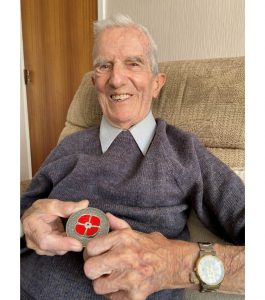
Jim is 97 and from Manchester – he was born in the Spring of 1925 and was called up to join the Armed Forces at the age of only 18. He served in the Royal Marines from May 1943 until August 1945, telling RBL he couldn’t even swim being a Manchester boy! His specific role was Coxswain of the Landing Craft Assault (LCA).
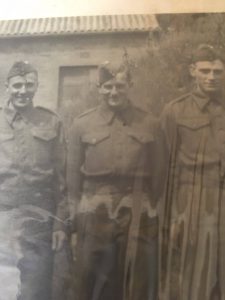
He landed on Juno Beach on D-Day 1944 and during his time in service, made several trips to land Canadian troops on the coast of Normandy. Describing one such trip he said, “I really admired these lads, I saw some wrecked craft, which must’ve copped a mine, but we were fortunate going in on a high tide, we avoided the mines in the water, going over the top of the obstacles.”
Jim is now a retired printer. He married his wife Marie at the age of 25 and they were married for 38 years, but she sadly passed 30 years ago. His brothers Tom and John also served in the Forces. Tom served in the Royal Air Force, and John worked in munitions.
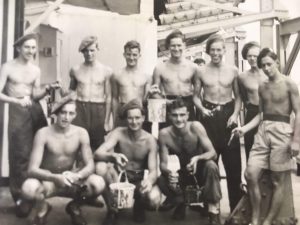
With the Royal British Legion, Jim has been back to Normandy and took part in the D-Day 75 commemorations in northern France in the Summer of 2019. He has said “I’ve had a whole life before and since D-Day, and it’s only since the RBL started organising these trips that I’ve really started talking about those days.”
“…you’ve got in mind the lads you’ve lost – we lost ten of our boats and even mine was classified as lost, the family were told that I was missing in action, because our craft was disabled in the middle of the sea.”
Jim added “I still don’t know which of those soldiers we dropped off died and which ones survived, which is sad for me. I often think about them, we offer our condolences at various times each year and I know the Canadians suffered heavy losses on Juno Beach, but I never knew them really, which is quite hard.”
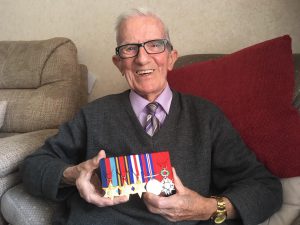
The Masterpiece which has been gifted to Jim is crafted from 1945 British Army Mess tins, a World War Two Spitfire and a D-Day Landing Craft, similar to the one piloted by Jim himself on June 6, 1944. Representing the three military facets of RBL, we have repurposed these important materials to create a three-dimensional ‘1921 style’ Poppy, which sits magnificently on the coin.
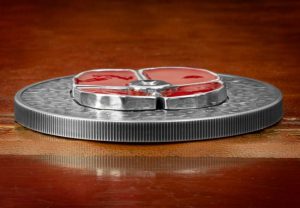
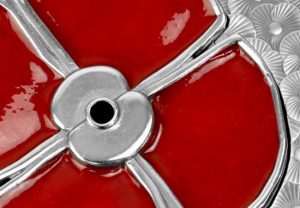
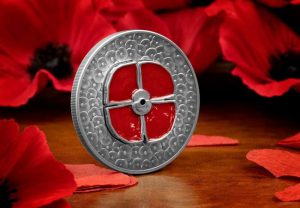
Jim has said “I’m very proud to receive this coin, it is a fitting reminder of my time in the Marines during World War Two and I am very grateful. I do get called a hero, but it is a word that’s over-used these days, even by my own family.”
We feel honoured that our 2021 Masterpiece Silver 5oz Poppy Coin has been gifted to Jim and what a fitting tribute that it’s one of our most historically fascinating pieces to have ever been released.
Our partnership, held since 2004, continues with the Royal British Legion who provide financial, social, and emotional support to members and veterans of the UK Armed Forces, their families and dependents.
Behind the design: The Platinum Jubilee Masterpiece that SOLD OUT in hours!
A flagship specification for Westminster collectors, ‘Masterpiece’ issues truly live up to their name and this British Isles Platinum Jubilee release was no different! Issued to mark Her Majesty’s record-breaking reign, this coin was struck from Pure Silver to a Proof finish and features a thoughtful design that pays tribute to the constant and reassuring figure. In fact, artist Neil Bromley spent 2-3 weeks on the exquisite reverse design, and we think he did an amazing job. Just ask the 285 collectors who have bought this Masterpiece, causing a complete SELL OUT!
For this particular Masterpiece, the Queen’s Virtues are the focus — and in this blog, we’ll dissect the fascinating design…
What are the Queen’s Virtues?
The Queen’s Virtues encapsulate the personifications of both Queen Victoria and Queen Elizabeth II. They are widely acknowledged as principles founded by Queen Victoria in the Victorian Age, and to this day, are carried forward by Queen Elizabeth II and so remain the core virtues of the British nation. The virtues are Victory, Charity, Justice, Courage, Truth and Constancy.
Victory (Victoria)
The Queen holds the position of Head of the Armed Forces and as such, victory as a virtue, represents the end of conflict and celebration of peace.
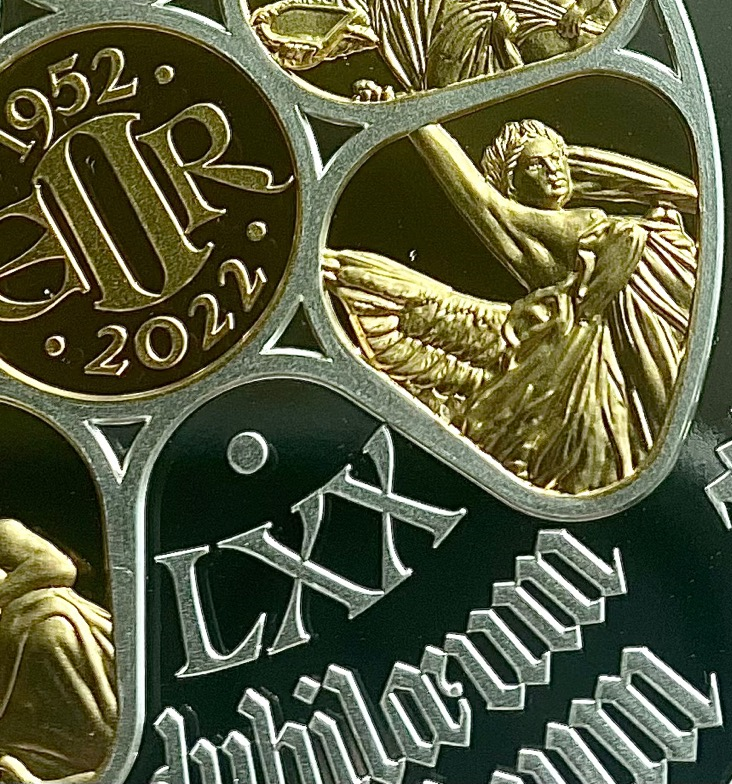
Charity (Caritas)
The virtue Charity expresses the Sovereigns responsibility to make charitable efforts to take care of the suffering.
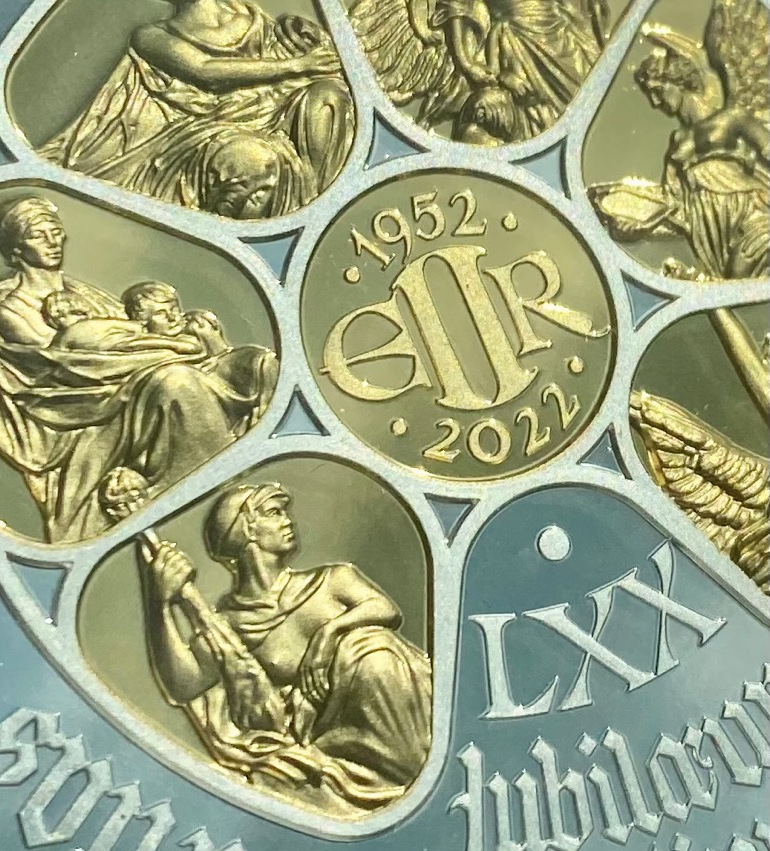
Justice (Justitia)
Sovereigns have established legal systems throughout the UK and from the beginning, have become important figures in the enforcement of law. Therefore, one of the Queens virtues is ‘Justice’ — as monarchs have been known as the ‘Fount of Justice’. The Platinum Jubilee Silver Masterpiece features a winged Angel representing justice for the people on earth, ensuring harmony and orderly manner within society.
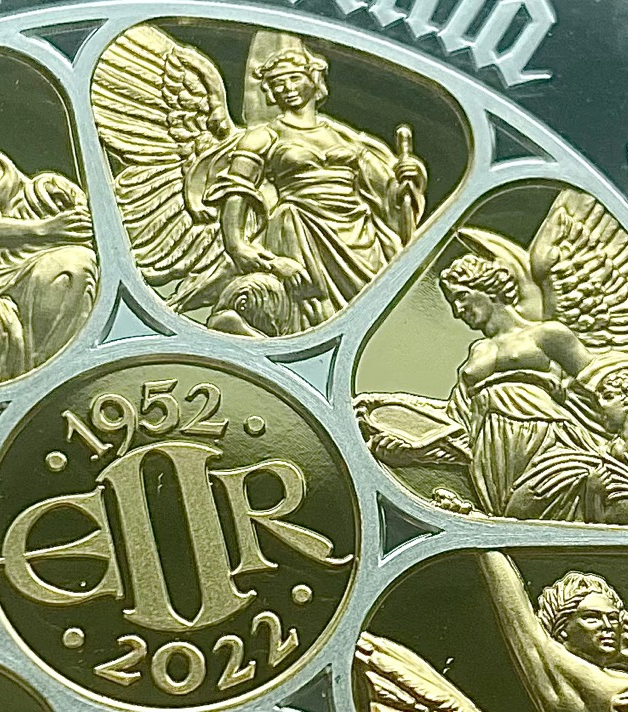
Courage (Animus)
Courage helps the Sovereign perform tasks that need to be carried out, and it is said the virtue courage makes all others possible.
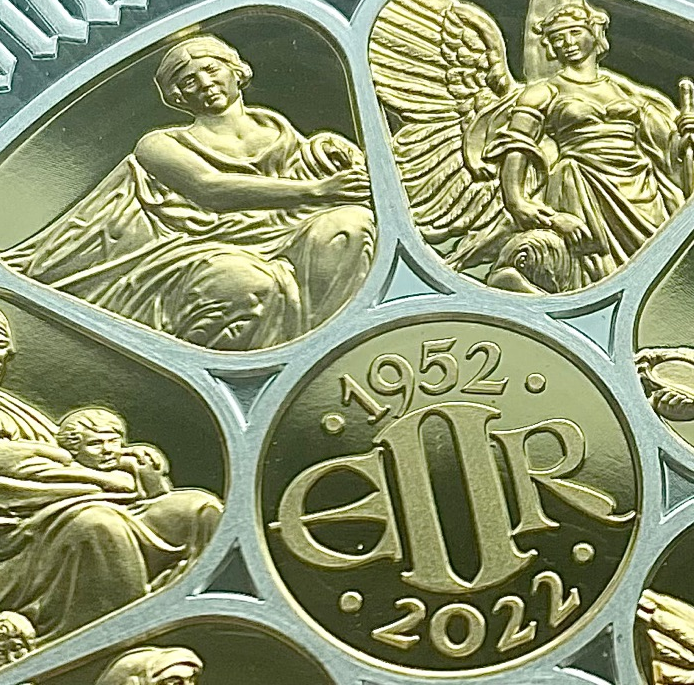
Truth (Veritas)
Truthfulness is important to the Sovereign — Our Queen Elizabeth II is known to be the searcher and seeker of truth.
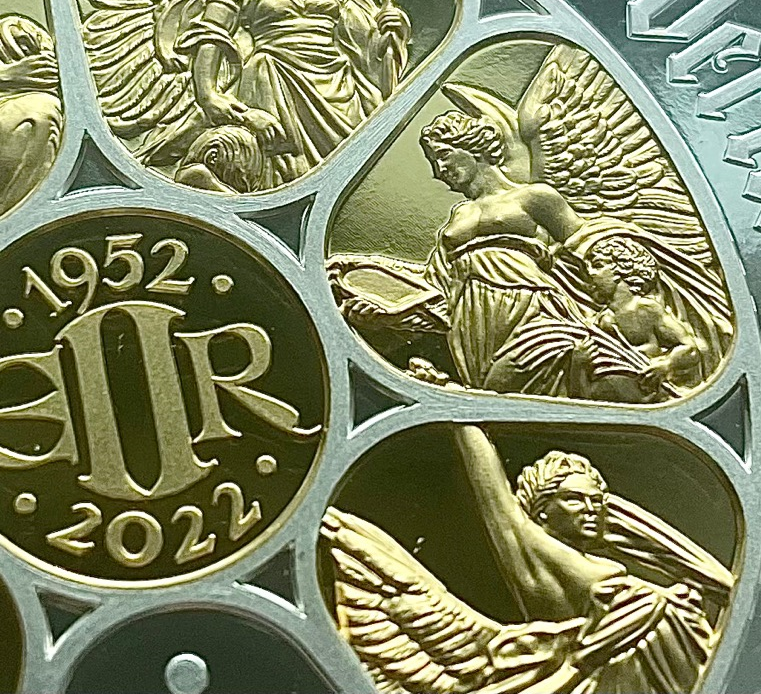
Constancy (Constantia)
As the longest reigning monarch, Her Majesty has shown great constancy over her 70-year reign, maintaining commitments and Royal duties.
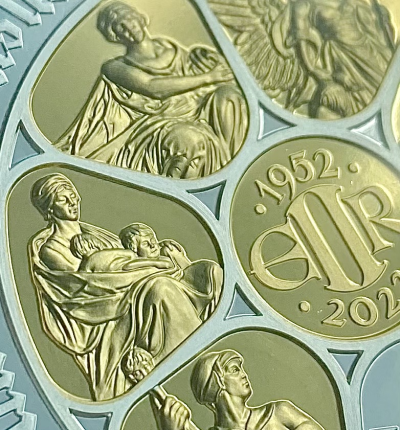
The masterpiece carries each of these virtues in segments, with the seventh segment at the bottom displaying ‘70’ in Roman numerals and ‘Platinum Jubilee’ written in Latin.

Meet the Designer
Neil Bromley who studied art for six years at college and graduated with a H.N.D in Calligraphy and Heraldry at Reigate School of Art in 1995, spent 2-3 weeks designing the reverse. Having designed and drawn over 30 coin designs to date, his work includes the painting of family crests, shields and full coats of arms.
Bromley took inspiration from the Queen Victoria Monument in London, situated in front of Buckingham Palace, which commemorates the death of Queen Victoria in 1902.
Using 2,300 tons of white Carrara marble, the central monument is 25 metres high and was created between 1906 and 1924 by Sir Thomas Brock. It features Victoria, as well as statues representing courage, constancy, victory, charity, truth, and motherhood.
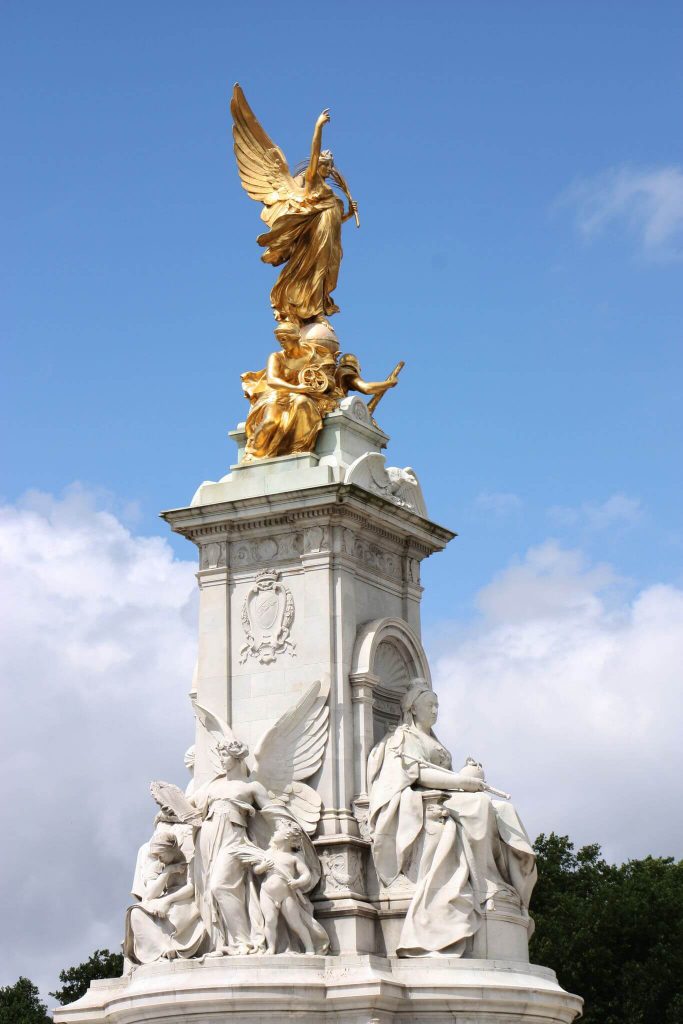
Creating a Masterpiece
Bromley spent many hours researching the Victoria Monument — alternative images of the six virtue statues from different angles were found to define a balance within the coin. He also took inspiration from some of the original drawings by Thomas Brock and old photographs.
Once Neil had suitable images, they were drawn by hand to form a pencil sketch on trace.
Each virtue was then re-drawn on hot press paper as separate single artworks. Each drawing taking around 2-3 days. Given the amount of detail in each statue, it was important to capture as much as possible and to create depth.
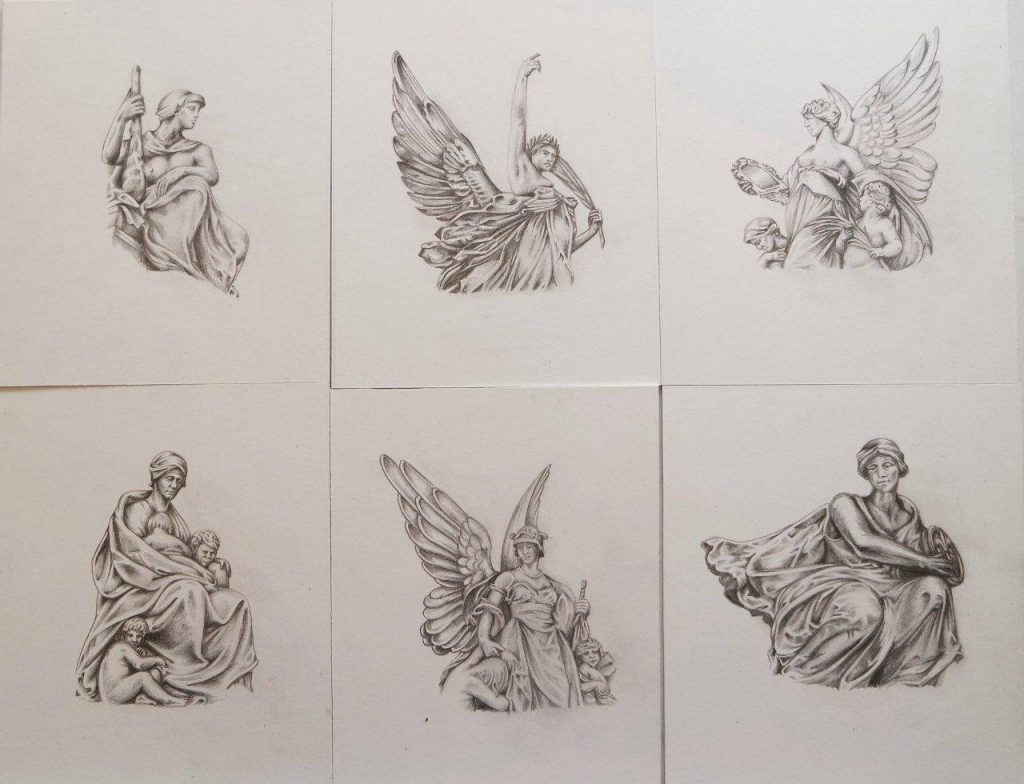
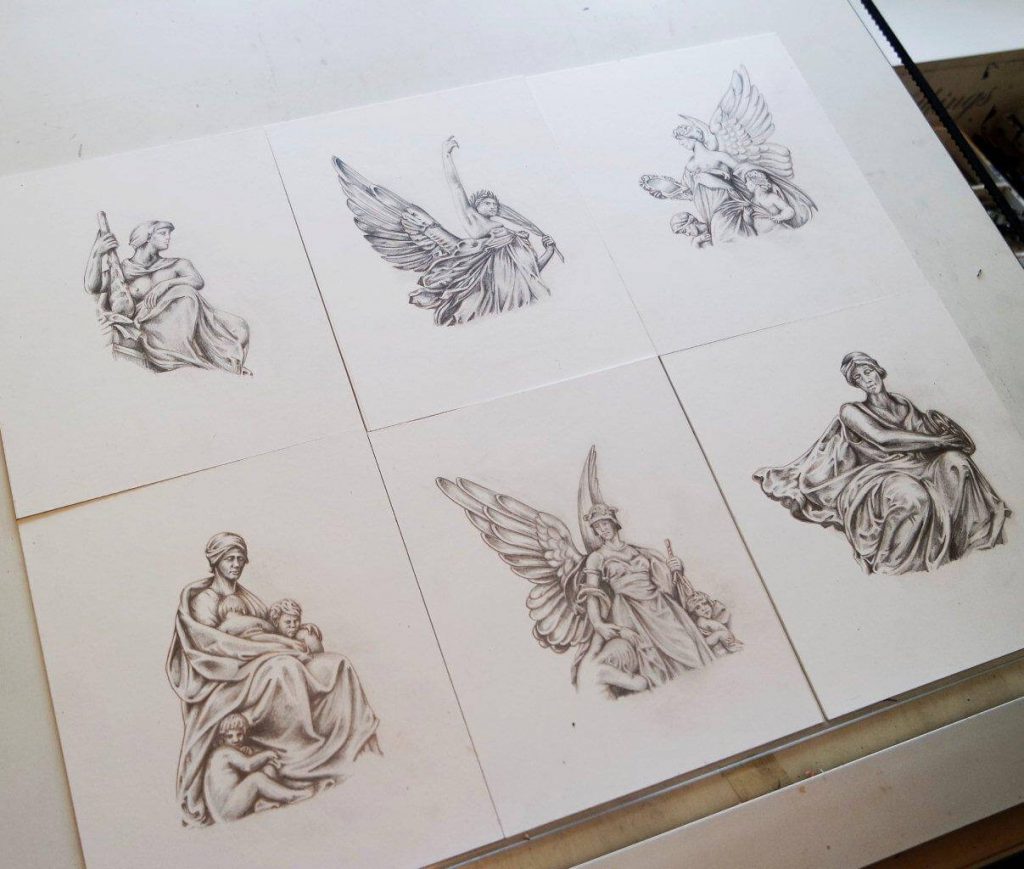
The coin design was created separately and took into account the directions of the images that related to the Latin text in each segment. The Latin for each segment was discussed through a medieval forum to gain the correct spelling and to advise on a suitable Latin inscription for Platinum Jubilee. This was discussed and agreed upon by several medieval historians and calligraphers.
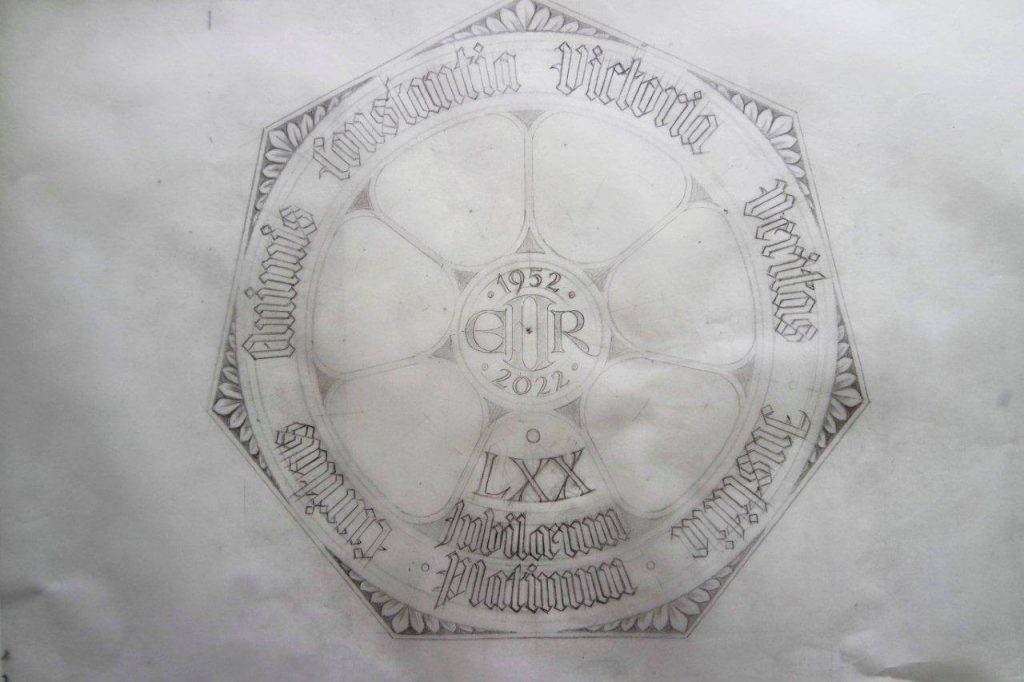
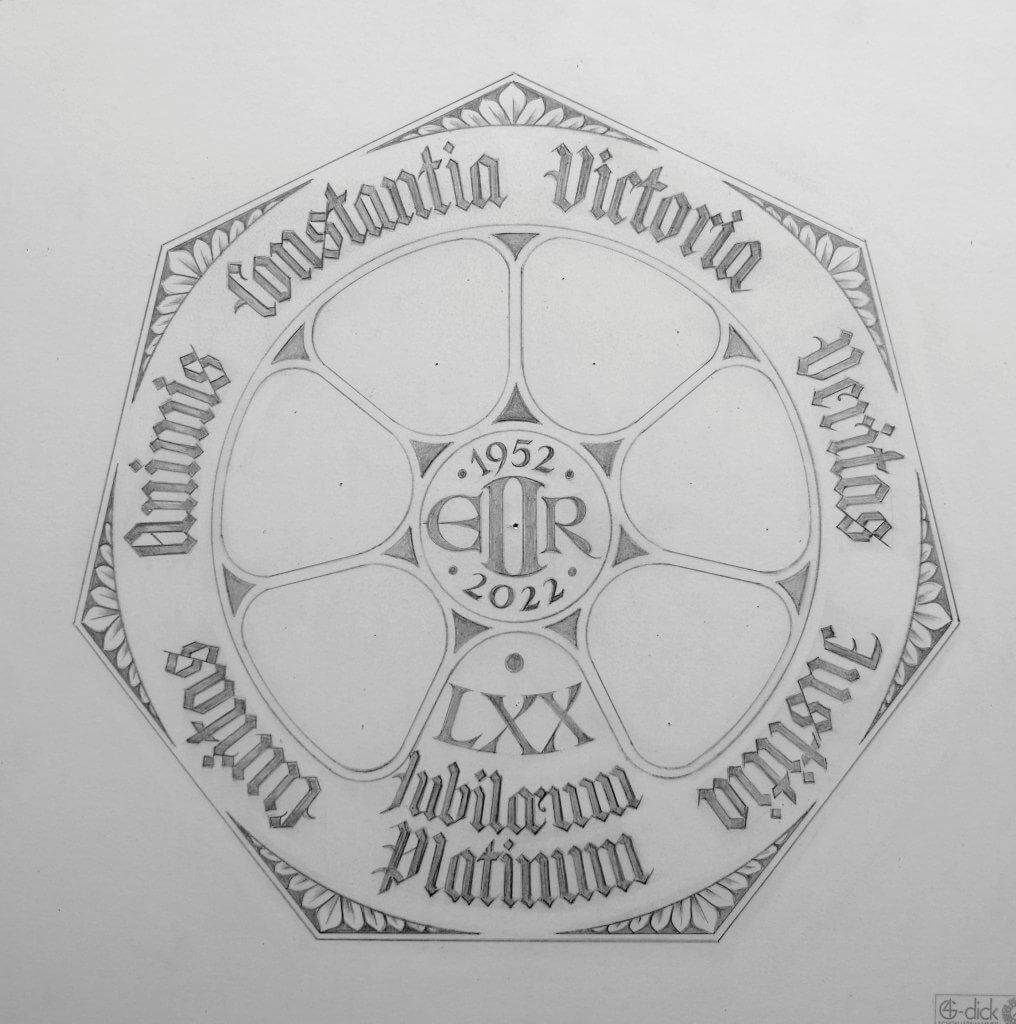
The final Masterpiece design was then struck from .999 Pure Silver to a Proof finish, with selective 24 Carat Gold-plating added to enhance elements of the design. The Proof finish requires immense craftsmanship and as such a mirror-like result sharpens the design.
And as I mentioned earlier, this incredible piece SOLD OUT in a matter of hours…
If this disappoints you, then I have what you need…
Be the first to know about our future premium releases, both Silver and Gold, by clicking the sign up link below. This way you won’t miss out again.
Click here to sign up for information about our future premium specification coin releases >>
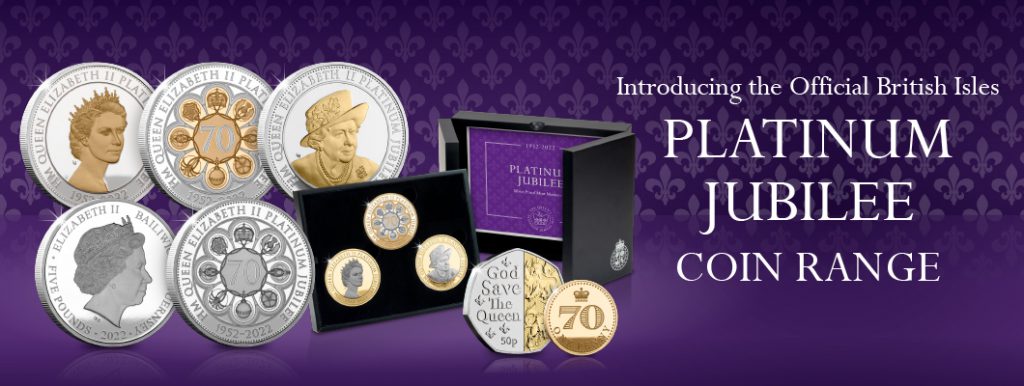
To shop our Official British Isles Platinum Jubilee Range, click here >>

